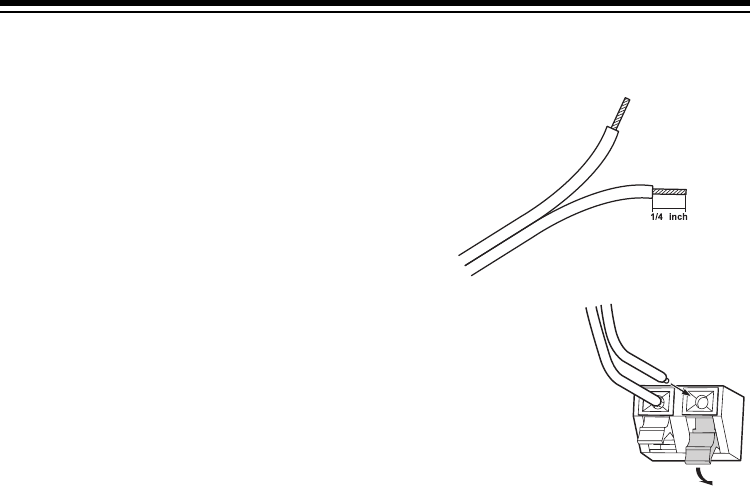
8
CONNECTIONS
CONNECTING THE
SPEAKERS TO AN
AMPLIFIER/RECEIVER
Notes:
• You can use an amplifier/receiver with
an output power rating higher than that
of the speaker system, but take care
never to exceed the speaker system's
maximum power rating (see
“Specifications” on Page 14)
• To avoid any damage to the speaker
system or amplifier/receiver, turn off the
amplifier/receiver before making
connections.
• Your local RadioShack store has a wide
selection of speaker wire. We
recommend you use color-coded or
marked wire to help you correctly
connect the wire. Color-coded wires
have a stripe running down one side of
the conductors. Marked wires have
ridges along one side of the conductors.
With the speakers in their approximate
locations, measure the distance from each
speaker to the amplifier. Use 18-gauge
speaker wire or lamp cord for distances up
to 50 feet. For greater distances, use 16-
gauge wire.
1. Split apart about 4-inches of speaker
wire on each end.
2. Use a wire stripper to strip
1
/
4
-inch of
insulation from each wire's end. Twist
the loose wire strands to prevent the
wire from shorting.
3. Press the right
front speaker's
negative (–)
terminal tab and
insert one of the
bare wire ends
into the opening.
Then release the
tab.
4. Press the right front speaker's positive
(+) terminal tab and insert the other
bare wire end into the opening. Then
release the tab.
5. Insert the other end of the wire you
connected into the right front speaker's
negative (–) terminal into your A/V
amplifier/receiver's right front negative
(–) speaker terminal.
N
NN
No
oo
ot
tt
te
ee
e:
::
: For the maximum bass response
and the best performance, be sure your
speaker wires are properly connected
according to their polarity (+ to + and –
to –).
6. Connect the remaining wire to the A/V
amplifier/receiver's right front positive
(+) speakers terminal.
7. Repeat this process for the left front
speaker, the rear channel speakers, and
the center channel speaker.


















